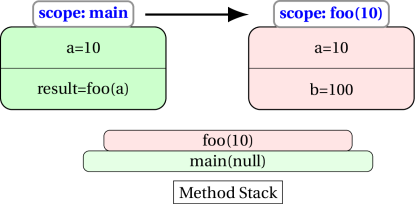What happens during a method call?
Before we jump into a method calling itself, it’s important to understand what happens when a method is called. Consider the following example:
1
2
3
4
5
6
7
8
9
10
11
12
13
14
15
16
public static void main(String[] args) {
int c = 1729;
int d = foo(c);
System.out.println(d);
}
public static int foo(int a) {
int temp = bar(a);
int result = temp * temp;
return result;
}
public static int bar(int b) {
int answer = b % 10;
return answer;
}
STEP 1: main method is invoked by JVM
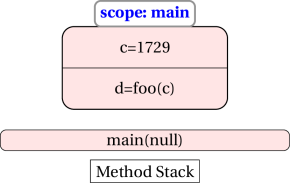
Method call is placed on the stack. Note that parameter is null because we typically do not pass any arguments to main, at least in this unit.
STEP 2: main method calls
foowith parameterc
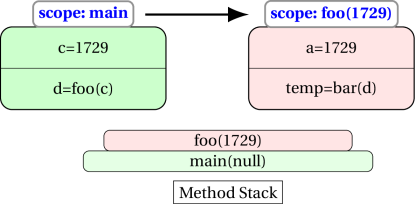
Another entry is made for the call to foo and placed on the stack.
STEP 3:
foocallsbarwith parametera
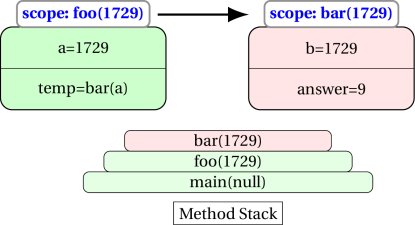
A third entry is made for the call to bar and placed on the stack.
STEP 4:
barreturns value tofoo
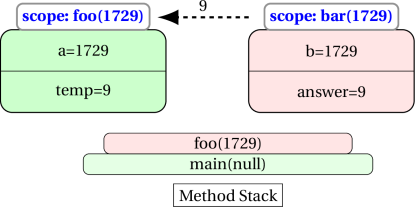
Entry for bar is taken off the stack. foo becomes the active method.
STEP 5:
fooreturns value tomain
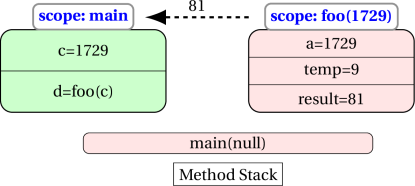
Entry for foo is taken off the stack. main becomes the active method.
STEP 6: Rest of main executes
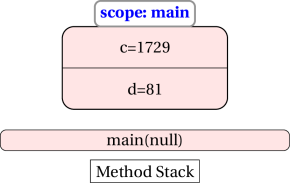
Formal parameters vs. actual parameters
Each method expects zero or more values and gives the passed values some name. These are called formal parameters.
When the method is called, appropriate type of values (hopefully) are passed to it. These are called actual parameters.
Consider the following example:
1
2
3
4
public static int foo(int a) {
int b = a*a;
return b;
}
In the above example, a is the name of the formal parameter in method foo. Whenever, foo is called with a value of the right type (int), it (the passed value) is copied into variable a that stays in memory during the current execution of foo.
Here,
ais the formal parameter.
Now let’s say the client code is:
1
2
3
4
5
public static void main(String[] args) {
int p = 10;
int q = foo(p);
System.out.println(q);
}
The variable p is being passed as a parameter to method foo. Java checks it’s of the right type (int) and copies it into variable a during the execution of foo(p).
Here,
pis the actual parameter.
Now consider a different client code:
1
2
3
4
5
public static void main(String[] args) {
int a = 10;
int result = foo(a);
System.out.println(a);
}
Now we have a variable a in method main (represented by main: a) being passed to foo and copied into variable a, represented by foo(10): a. This is ok since the two variables, although with the same name, exist in different scopes. The following figure summarizes the transaction.
